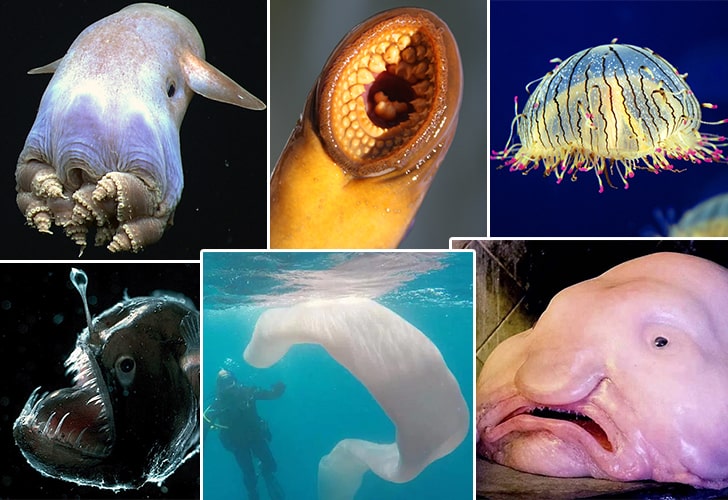The depths of the oceans have always held an interesting allure for us human beings. Therefore, it is not uncommon to see new and interesting technology designed to further investigate the deepest of areas where no human has been able to go as of yet.
Thanks to these advances, new species that dwell under the sea have been discovered. We do have to say that some look downright terrifying while others have been literally compared to angels. Keep reading if you want to know more about what our world looks like in the deepest parts of the ocean.
Sarcastic Fringehead
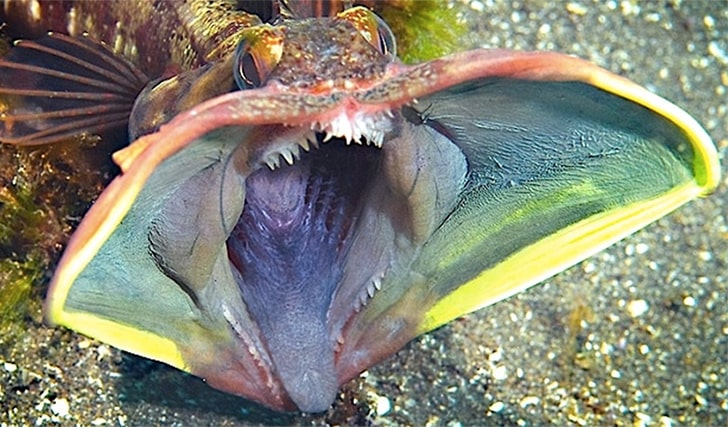
These fishes are small, but they are very resilient and are quite aggressive. These marine creatures find themselves in some epic battles in the ocean! The purpose of battling it out is to determine which animal can assert its dominance over the other.
Their fighting style is very unique. When they fight, they put their mouths together. However, this is far from being a romantic kiss and it does not serve the purpose of ascertaining if there will be kissing at all. It's to determine who has the bigger mouth! Once they know this, the animal with a bigger mouth is the more dominant one.
Bloodybelly Comb Jelly
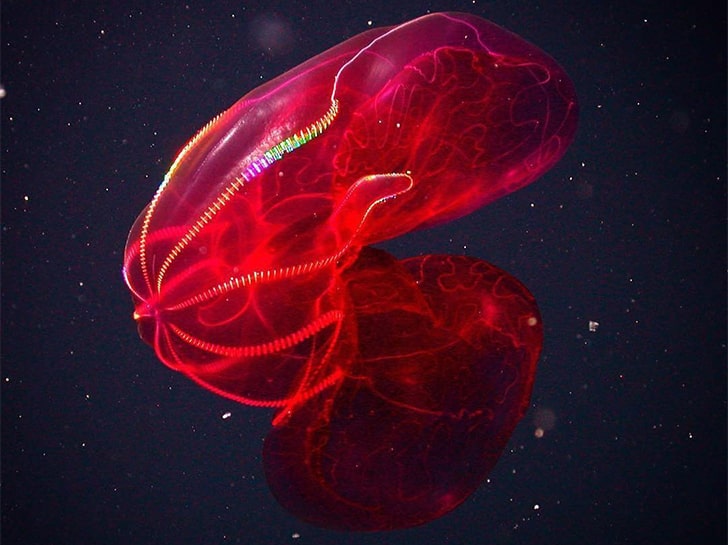
This very rare marine creature was found in the Pacific Ocean near California. They can have a variety of colors, from red to black or even purple. The purpose of this color characteristic is to mask their intrinsic luminescence, which could make them easy prey if targeted by predators.
Through this, the Bloodybelly Comb Jelly can go undetected by any who would hunt for them. They are even rarely caught on camera, probably due to the same deep color characteristic. Unlike other jellyfish, these ones are quite harmless as they do not have the capacity to sting another living being.
Dumbo Octopus
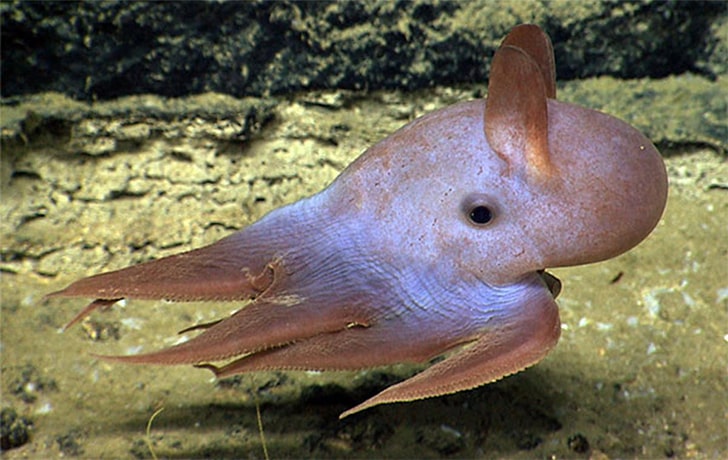
Those things on top are not wings nor are they ears—those are its fins! The Dumbo Octopus has been called this because of the similarity between their fins and the impressive ears of the Disney character Dumbo. The film promotes animal care, and these rare octopus species is in much need of it.
They live very deep under in the sea, at an estimated depth of 12,000 ft and are considered one of the rarest species. Despite their scarce numbers, they seem to be distributed all over the world. They have been seen everywhere from New Zealand to the Philippines.
Pyura Chilensis
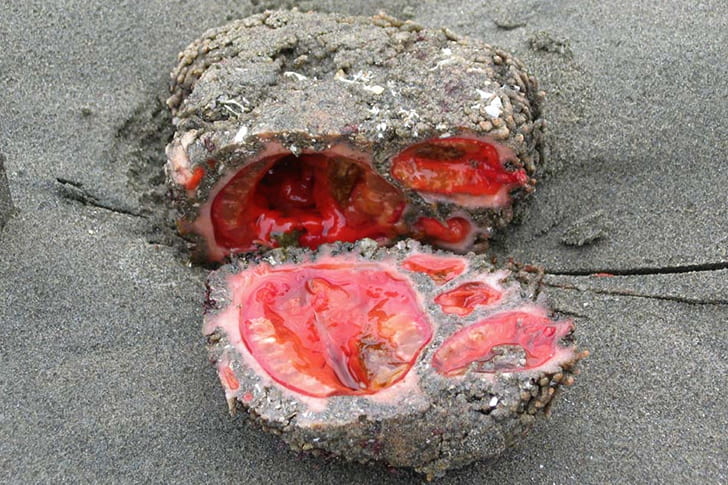
In 1782, Juan Ignacio Molina described this creature that is now known as Pyura chilensis. It's a tunicate, an invertebrate marine animal that looks like a mass of organs wedged inside a rock. The creature is predominantly found in the subtidal and intertidal coasts of Peru and Chile.
Interestingly, the organism starts its life as a male and turns hermaphrodite in its puberty stage. Finally, the creature reproduces by tossing its eggs and sperm into the surrounding waters. Also, the Pyura doesn't need a mate to procreate, and it can self-fertilize to bring forth a generation of other similar organisms.
Sea Pigs
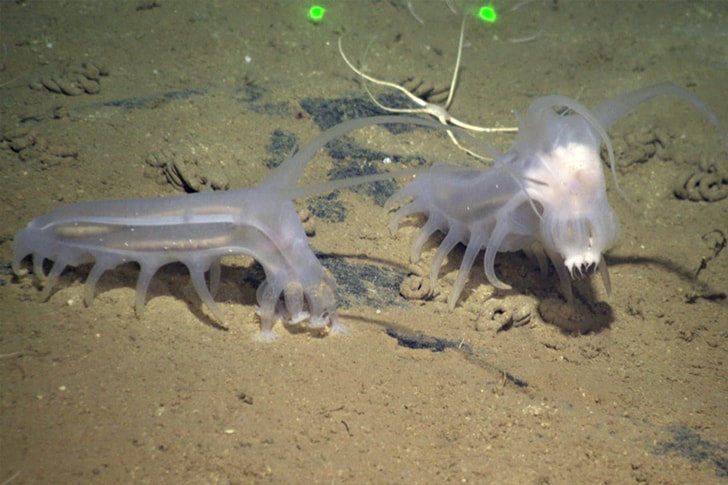
Sea Pigs are scientifically known as Scotoplanes and were discovered accidentally. In 2017, an Australian biodiversity expedition uncovered the blobby marine creatures, which essentially serve as the vacuum cleaners of the ocean. They have tube-like feet that they use to traverse the abyssal mud in search of microorganisms to feed on.
They behave like Sea Cucumbers and congregate on the seafloor in large numbers. That's where food is plentiful, and it also protects them from turning into potential food for other creatures that live at higher levels in the sea.
Goblin Shark
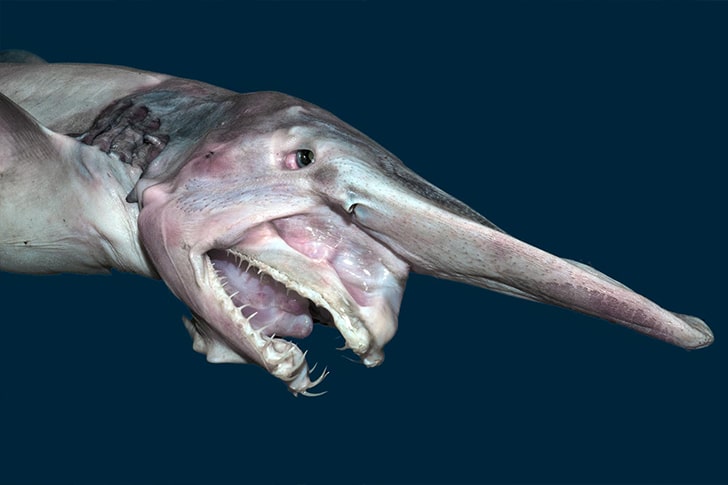
This shark is definitely unlike any other we’ve ever seen. Its elongated snout and showy teeth don’t make it the cutest of sea animals. However, we should be respectful of its heritage, as it has been called a living fossil because it’s the only survivor of an extinct family.
Its mean length is estimated at 12 feet, but it can grow even larger than that! Although it is a carnivore, it doesn’t really go for a big game. Instead, it feeds on the fish, crustaceans, and cephalopods that it can find near the marine bottom. This might be because of its small fins.
Blobfish
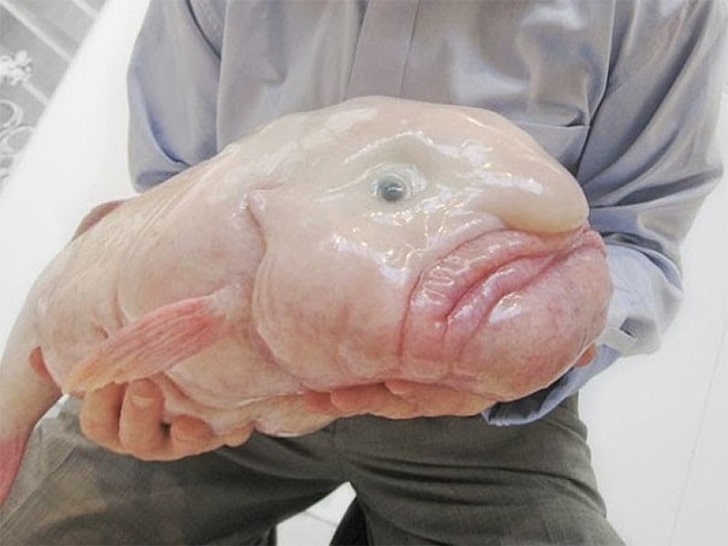
The blobfish kind of looks as if it is always going through depression. With its mouth permanently in a pout and its anatomical features, it looks like it has had a rough life. There are theories that claim that decompression processes are the ones responsible for how they look.
However, very little is actually known since only a few specimens have been observed. They’re found mainly in the waters of Australia, New Zealand, and Tasmania, without any reports in the Western seas of the world. It kind of looks like it could be cuddly, but it looks too slippery.
Bobbit Worm
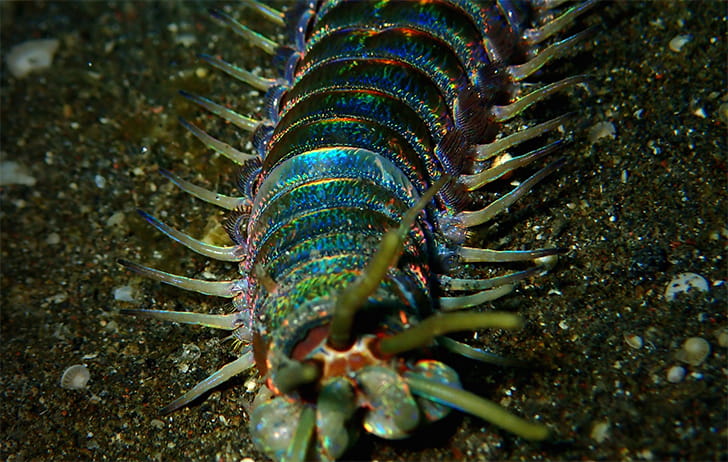
Sometimes, the story of a name is surprising. The Bobbit worm was named in honor of Lorena Bobbitt, a woman who, after suffering years of abuse, decided to snap an important part of her husband’s anatomy. Similarly, despite its harmless appearance, this worm can snap its prey in half.
And it looks so pretty too, right? With its colorful outside, this sea worm shows that looks can definitely be deceiving. It likes to camouflage itself on the sea floor and wait until its antennae detect possible prey. What an effective way to get its nutrition for the day!
Barreleye
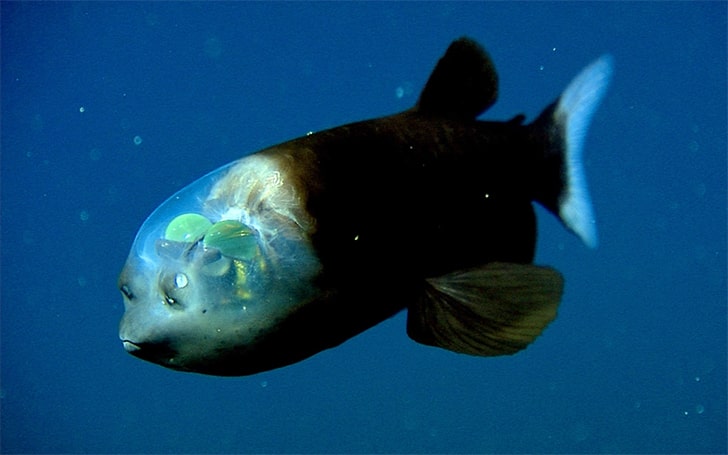
Now this one is definitely a cutie. The name comes from their tubular eyes, which are usually looking up and searching for unsuspecting prey. They maintain a very complete diet and alternate their daily catch between fish, crustaceans, and the occasional plankton.
They have been seen all over the world from the Atlantic Ocean to the Indian Ocean. Sightings have also been reported in the Atlantic. Their transparent heads apparently also have an evolutionary purpose. It allows for more light to reach their eyes so that they can hunt better!
Water Bear
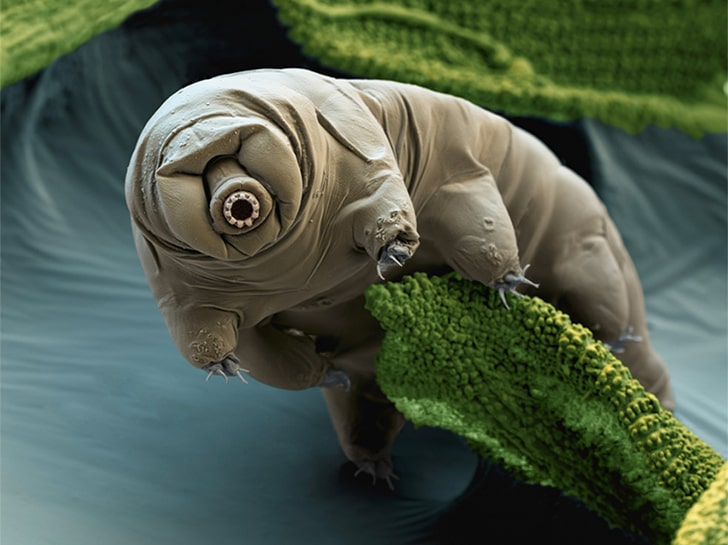
You could say that the main characteristic of these animals is their incredible resilience. They seem to be able to live in very extreme circumstances. From radiation to extreme temperatures and increased or decreased pressures, one could almost say these are the cockroaches of the sea.
In scientific books, they look similar to bears. Hence, they were given the name water bear. However, unlike mammals, they have eight legs and a segmented body. Given their incredible resilience, it’s no surprise that they have been found in waters all over the world.
Fangtooth Fish
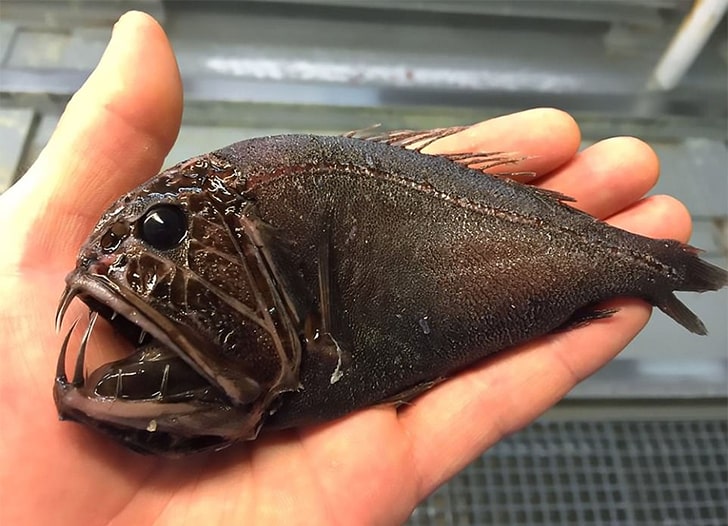
This definitely looks as if it jumped out of a horror movie or a little kid’s nightmare. However, it is a part of nature and its many mysterious species. This guy here is aptly called fangtooth and looks very deadly if you ask us.
This fish lives at a great depth estimated at 6,500 feet, but it can go as deep as 16,500 feet—a depth that's definitely hard to reach without special equipment. They are a very unique family and have the largest teeth in regards to the total size of their bodies.
Pink See-Through Fantasia
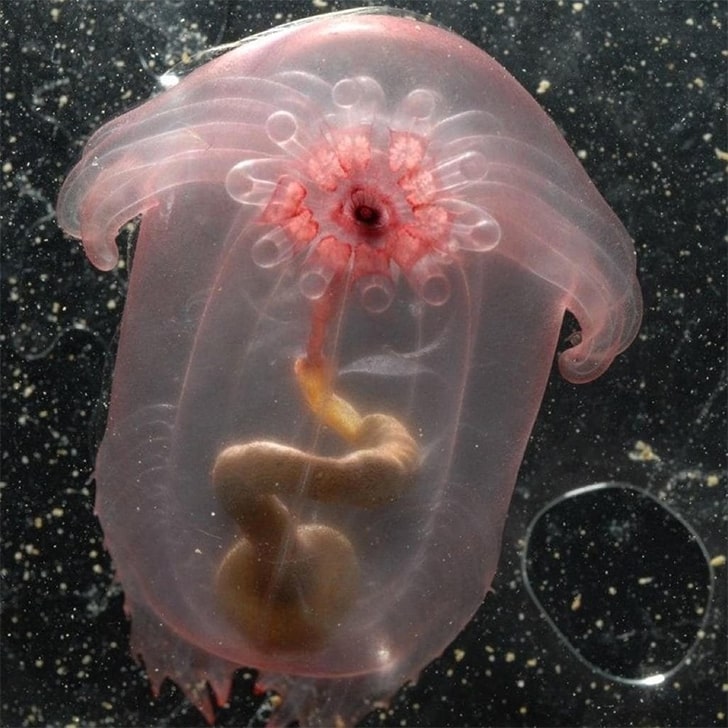
This animal was only discovered 12 years ago, and it has been classified as a sea cucumber. Despite their vegetable-like name, they are classified as animals, and their translucent skin is one of the things that makes it so unique and attractive to the eye.
The fantasia diet plan is actually very basic. They feed on the sediment of the sea and usually do it in less than a minute. Furthermore, they don’t even need to eat every day! Their feedings are somewhat described as episodic. They have developed the ability to move quickly, possibly, to avoid predators.
Flower Hat Jellyfish
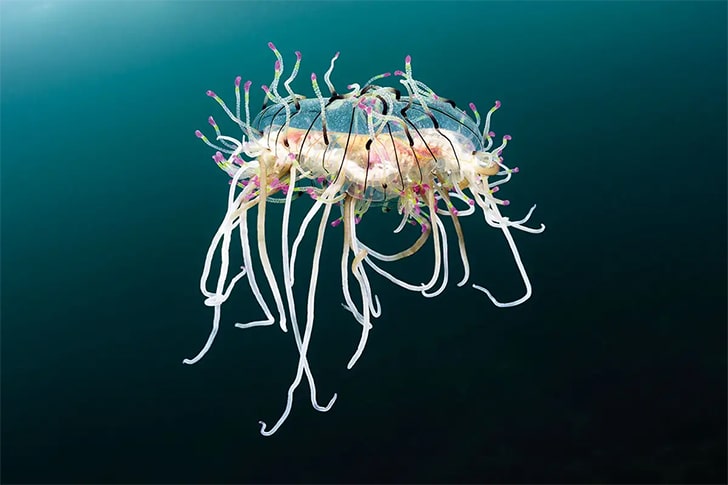
So when bringing a flower to your partner, this might not be the first thing you think about. But doesn’t it look gorgeous, though? The flower hat jelly is not an actual jellyfish as they belong to a different class. They can mostly be seen in the Pacific.
They have a short lifespan, which is estimated at months. They have a nocturnal hunting schedule while they mostly rest during the day. They tend to eat small fish in order to get the nutrients they need. Their sting can be dangerous for humans, but it usually isn’t.
Giant Spider Crab
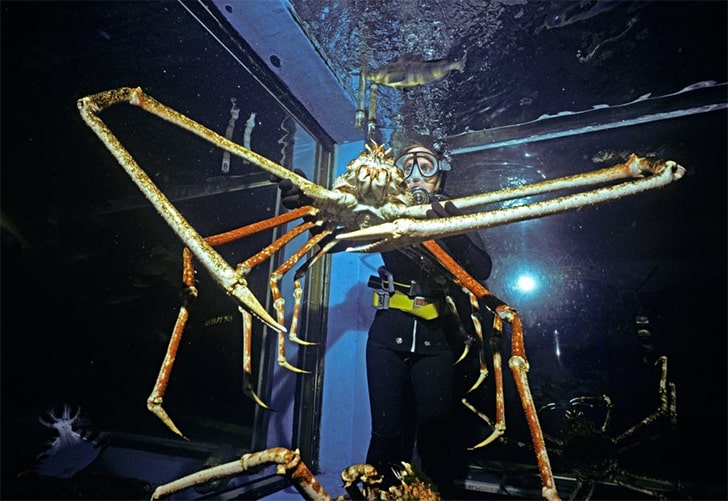
If you want to have an opulent dinner in Japan, this spider crab might be what’s in store for you. In this country, these crabs are considered a delicacy and are commonly seen in the Asian nation's seas. The spider crab is considered the largest arthropod that currently roams the Earth's oceans.
They can live as deep as 1,000 feet and can reach a measure of about 12 feet, which is really a unique characteristic of these animals. It seems to be the survivor amongst other extinct species of crab spiders. Some fossils that could be related to it have been found.
Anglerfish
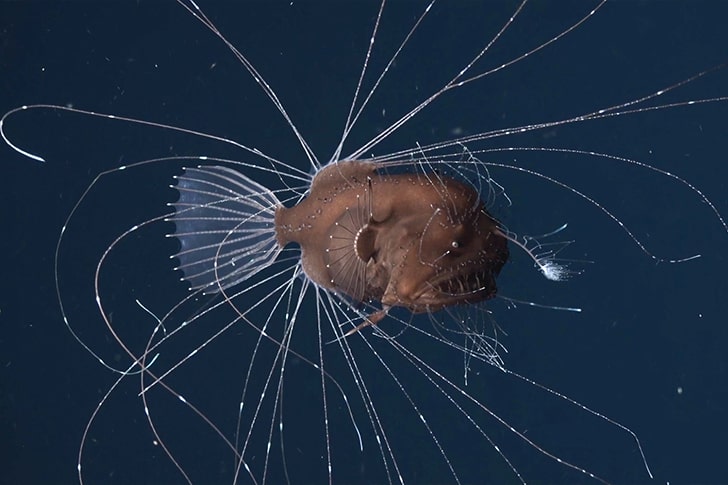
Now, this is the definition of attracting your prey with style! The anglerfish has a lantern emerging from the top of its head. The whole purpose of this anatomic part is to lure its possible prey towards the fish! Talk about getting things done with little creative effort!
Female anglerfish are much larger than their male counterparts. Their habitats vary as they have been found all over the world. They have also been observed both in the deep sea and on shallower continental areas, showing their great diversity and incredible adaptability.
Armored Snail
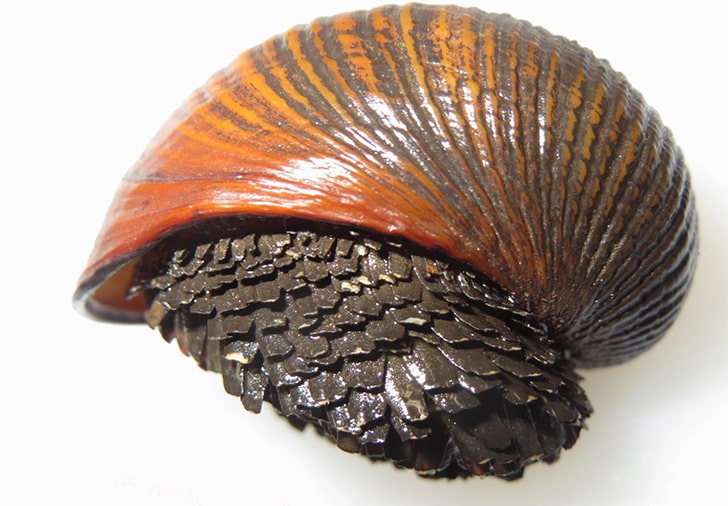
This one is definitely a difficult one to crack, quite literally. The armored snail has three different layers of protection. The most impressive thing is that one is made of iron! That’s right, this snail’s evolution has allowed it to create its own iron armor. How impressive is that?
They can be found mainly in the Indian Ocean—more specifically at hydrothermal vents. They don’t seem to have a problem with hot currents and their armor is more than sufficient to protect it. This snail’s home security is top-notch indeed.
Giant Pyrosome
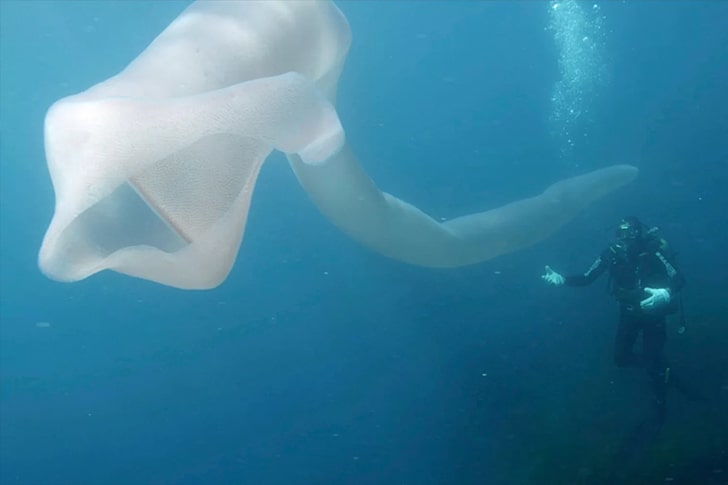
In this picture, you can see an extremely large colony of pyrosomes. They can be as small as 1 cm or as large as 60 feet. A gelatinous tunic is the one in charge of keeping all the tiny components together in order to form this giant structure.
The idea of living like this is not that surprising after considering that they are able to live in various depths and water temperatures. The problem would be getting it into your fish tank because this is actually a colony made of thousands of clones that form the cylindrical hollow structure.
Horseshoe Crab
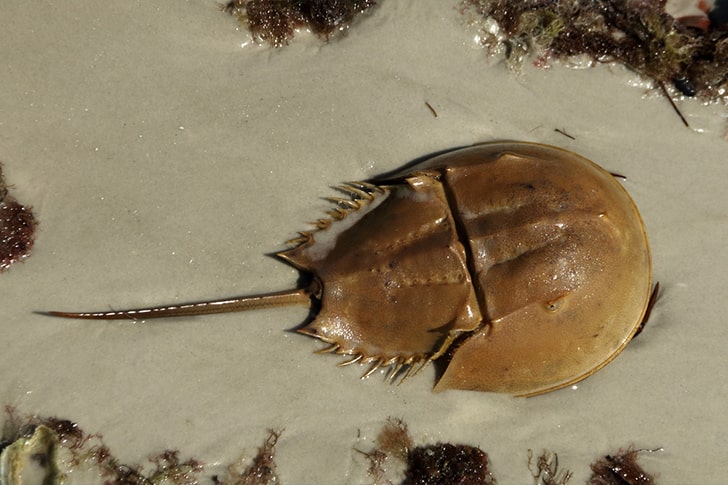
Despite their deceiving name, horseshoe crabs are not actually crabs! They belong to an entirely different family. Given the fact that they have blue blood, we could call them the royalty of the sea. However, this unique characteristic has had alarming consequences for these animals.
It was determined that their blood could be used for certain medical tests. Therefore, it wouldn’t have been weird to see these animals in a medical research center. Artificial means to achieve the same goal have been found. Despite this, their numbers have decreased exponentially due to exploitation, because they are not protected by animal rights.
Giant Isopod
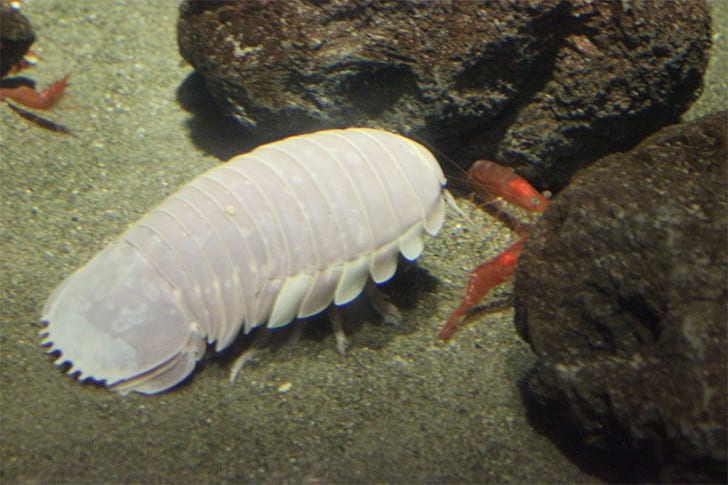
Giant Isopods may look like something out of a fairy tale but the truth is, they can be quite dangerous! Even though their bug-like appearance makes them seem harmless, giant isopods are bottom-dweller carnivores. They can go years at a time without eating, like going on a diet, since they live in a semi-hibernation state. But, when they eat, they devour anything that crosses their paths.
They live in the cold and deep seas of the Atlantic, Indian and Pacific Oceans and so far, 20 different species have been discovered, with the first one being noted back in 1879. They come in different colors and shapes and the largest one ever seen was 2.5 feet long!
Vampire Eel
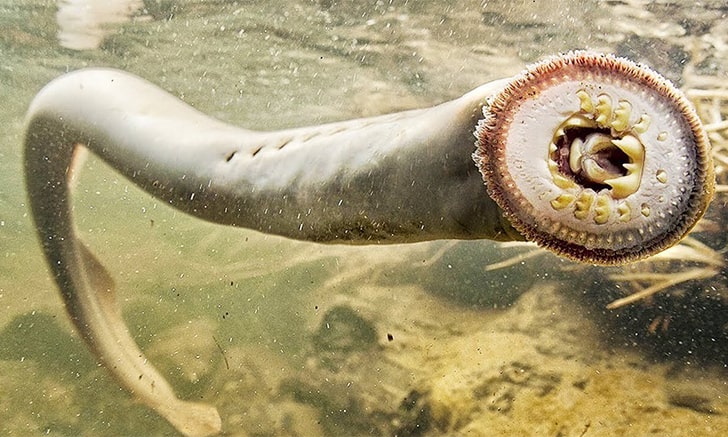
These primitive fish are an example of very ancient species which dominated the sea millions of years ago. If you think they’re scary, you’re not alone as we think so too! Much like their name suggests, these jawless creatures feed by sucking the blood of other fish, which is what their name and legacy have been based upon, of course.
However, there are others of this species that do not do this. Some of the ones that do feed this way have to make a little trip to breed and, of course, to prey on the smaller fish, sort to say. They have to go from saltwater to freshwater in order to reproduce.
Atlantic Wolffish
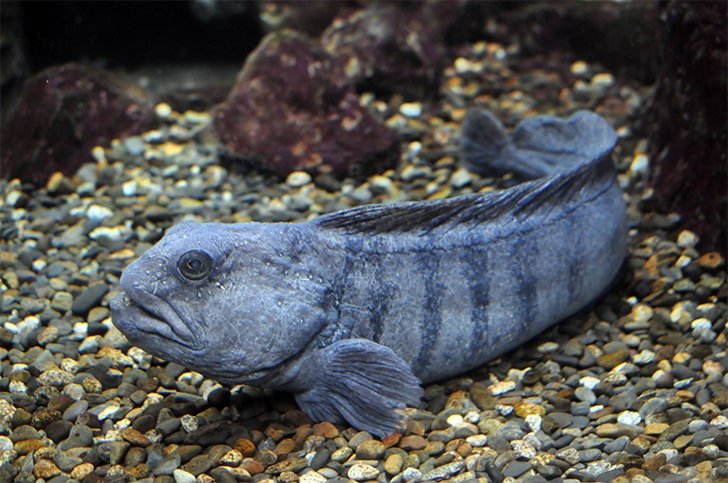
This solemn-looking fish doesn’t live as deep as some of the other species we have presented so far. It can usually be located at 1,600 feet. Protecting this species is more important than ever regarding this species as they have been widely overfished, and this has caused a depletion of their numbers.
They have been called the wolf or the cats of the sea. The name comes from their characteristic teeth, which allow it to feed. Their main sources of nutrients are mollusks and crabs. Their strong bite allows them to even chew through their food's shells.
Six-Gill Sharks
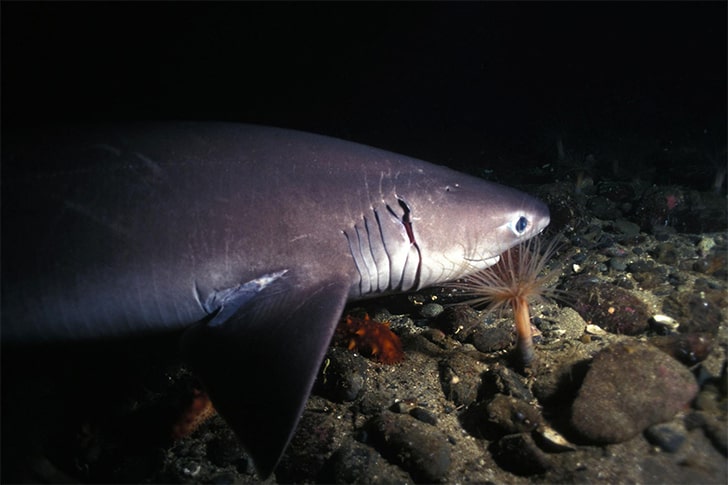
The six-gill shark, which is also known for its blunted nose, is often called using its other popular name, the cow shark. They can reach a length of 16 feet, making them the largest sharks of their type. They can be found mainly in tropical waters, but what they eat varies widely.
They can live in very deep waters—as deep as 8,200 feet! However, they are nocturnal feeders and get their daily calories in shallower surfaces. Their colors also vary, going from black to a lighter tan color. They have been related to fossils found of extinct species.
Giant Tube Worms
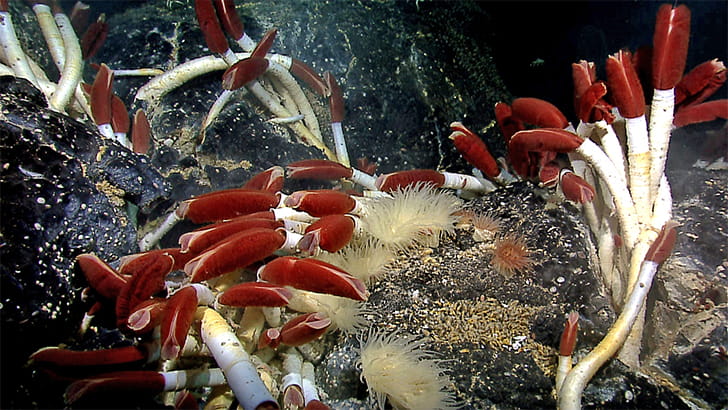
This species should be known as the survivors, considering all the extreme conditions they can withstand. No sunlight, immense pressure, and temperatures at which other animals would freeze are big enough to defeat these creatures. They can survive it all and thrive.
We should really study their DNA! Who knows which secrets this species hides in its conformation. What we do know is that they are highly adaptable and even toxic chemicals don’t faze them. They live in colonies and have been seen near the Galapagos Islands and other areas of the Pacific Ocean.
Vampire Squid
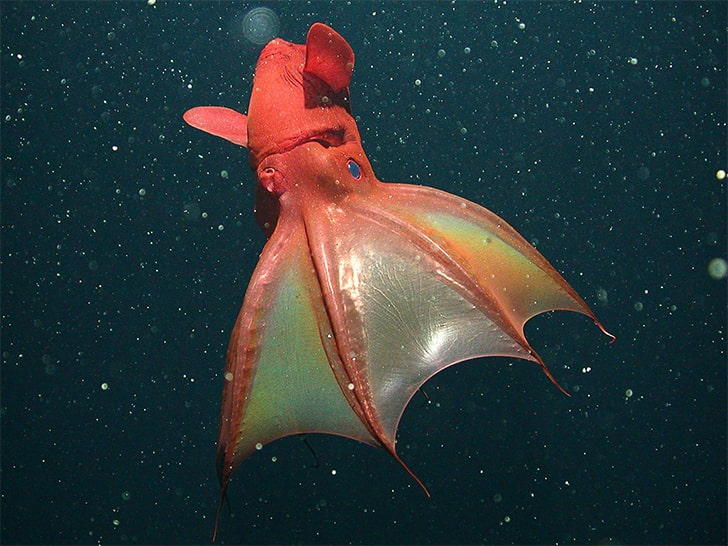
We could say that this animal is a mixture of octopus with squid, given its similarities. However, they are placed within their own order with how rare they are. They need minimal oxygen levels in order to survive and can live without issue at depths as deep as 10,000 feet.
They are very small in size but have enormous eyes that allow them to swim through the sea. Their name comes from the cloak-like structure that links its webbed arms, making it look quite vampire-like. However, their nutrition doesn’t involve sucking the blood out of other fish.
Pacific Viperfish
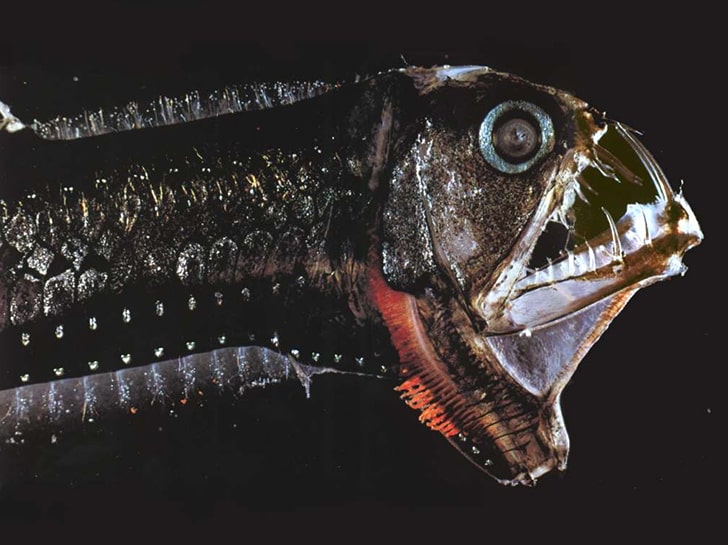
The problem with having teeth as big as the Pacific viperfish is that even though these might be great for eating, they won’t even let it close its mouth. This is probably every dentist’s nightmare. They only grow up to 8 inches long but can live at impressive depths.
Their lure to catch their prey? Their belly! It has bioluminescent characteristics that draw their unsuspecting prey in. In order to hunt, it goes to shallower waters, knowing that there are more food sources there. It mainly feeds on crustaceans, but it also eats the occasional small fish.
Atolla Jellyfish
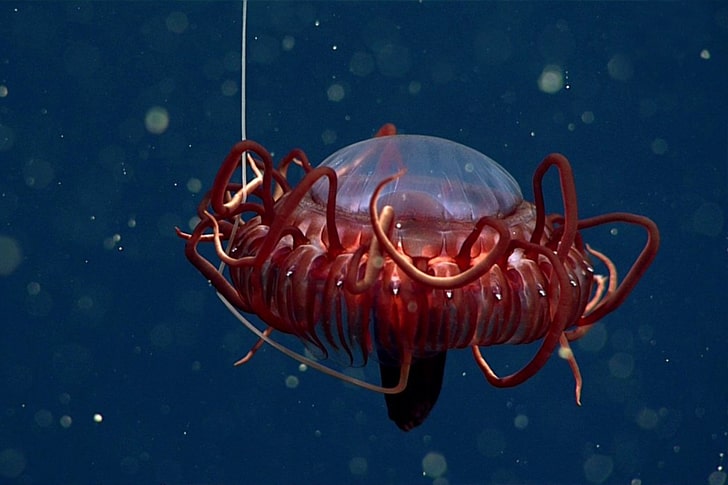
Now, its crown may not be made of gold, but it definitely looks regal. The Atolla jellyfish is also known as the coronate medusa for the crown-like structure that’s part of its anatomy. It lives all over the world, and one of its more distinctive features is its deep red color.
It has a huge number of tentacles with one larger one that aids it in hunting its prey. Its defense mechanism is quite interesting, as it starts giving bioluminescent flashes when attacked. The purpose of this is to attract bigger predators that will take care of the attacker.
Glass Squid
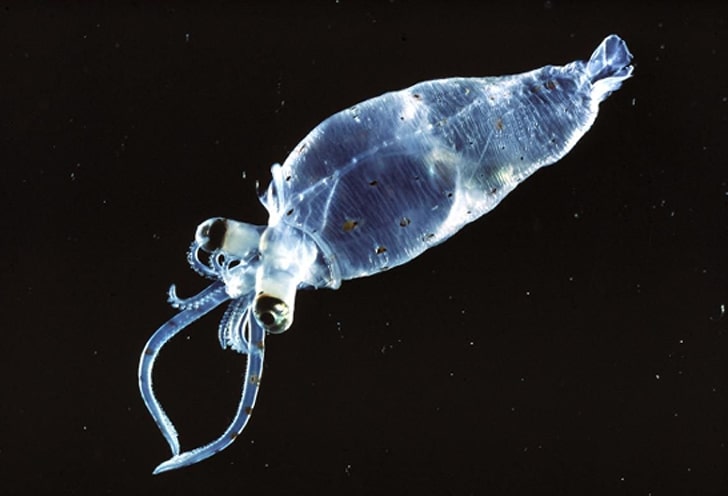
This species can be seen in middle depths all over the world. They can be as small as a few inches or reach lengths of approximately 10 feet. They are reminiscent of glass, given how transparent their skin is, which helps it in going unnoticed by predators.
Taking it further in their camouflage system, they have bioluminescent areas underneath their eyes that serve to cover their own shadows. Who needs camo-pattern clothes when you have such an amazing intrinsic system for covering yourself? This might be even better than the chameleon’s system.
Squidworm
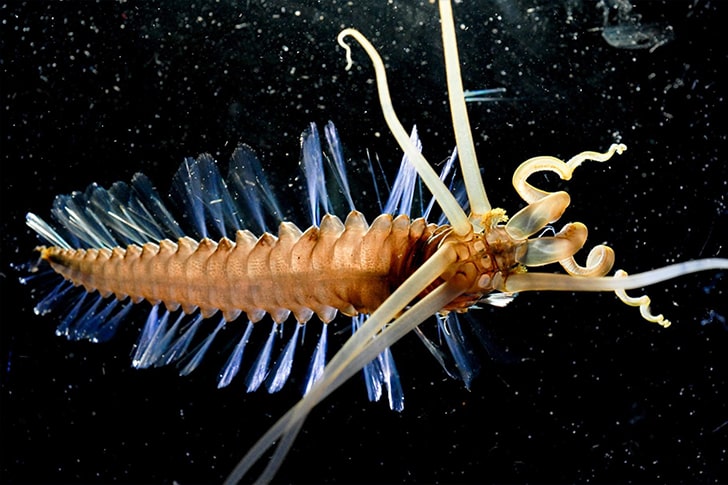
This is one of the rarest species that has been discovered in the last 12 years. It was found near Indonesia and the Philippines, an area that is very well-known for its immense biodiversity. It can live as deep as 5,000 feet, therefore the aide of technology was necessary.
Researchers have designed robots that carry cameras and can withstand the enormous pressures present at great maritime depths. This is how many of the species presented have been discovered. Only six specimens of the squidworm have been collected. It has been called a squid for the tentacles it has on its head.
Ribbon Eel
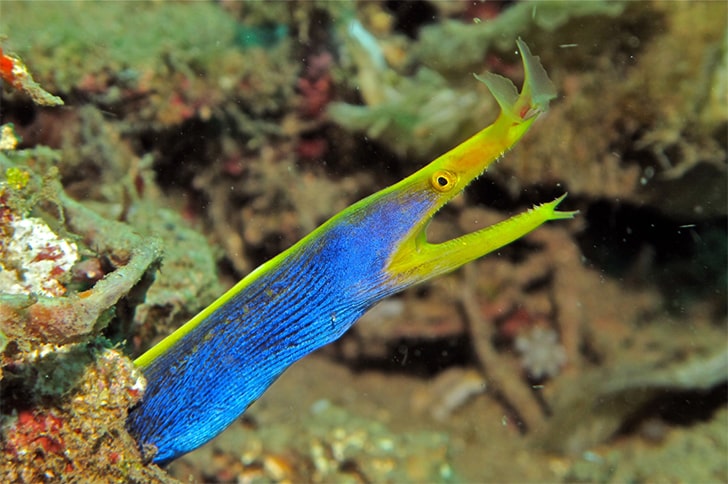
Many have likened it to a mythical Chinese dragon due to its physiology. With the long and thin body and colorful skin, we do see the resemblance. It can be found in the Indian and the Pacific Ocean. They can live in very shallow waters and are often seen by divers.
It is believed that they have hermaphroditic characteristics when reproducing, but this has not been established. What is known is that males tend to have a predominantly blue color while yellow is the main color for females when in adult form.
Salp
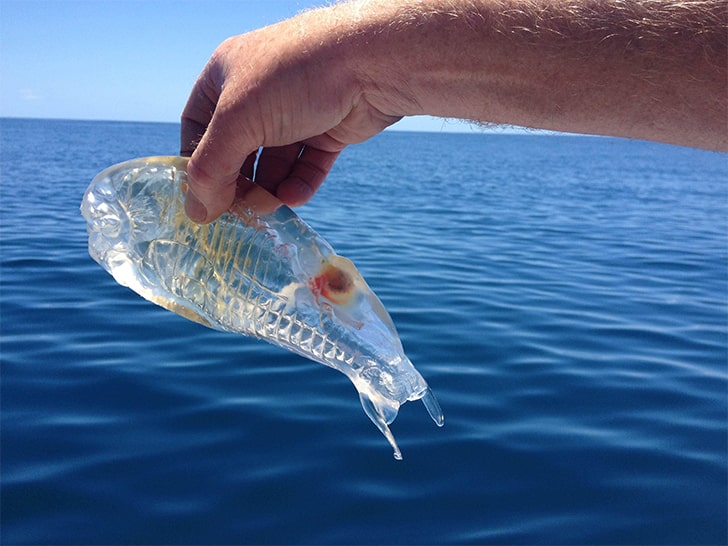
You can literally see this animal’s insides, and it appears there isn't much. The salp uses water in order to move. It seems to have an internal pumping system that uses the water going through it. They do look quite beautiful and as if they are made out of silicone or glass.
Their diet consists mainly of phytoplankton, which is obtained through the same water-pumping process. Specifically, it has an internal filter that salvages these elements in order to get the nutrients it needs to keep going. Talk about self-sufficient! They are more commonly found near Antarctica and are sometimes gathered in great swarms.
Christmas Tree Worm
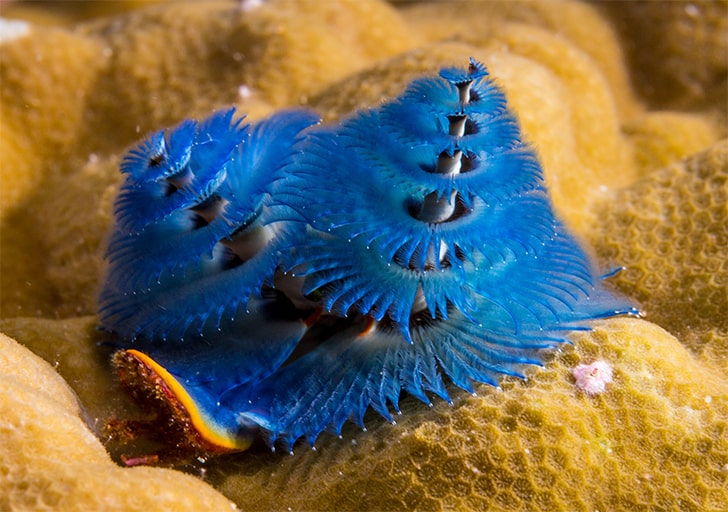
Now, this might not be the first thing that comes to mind when you think of a Christmas tree. What looks like the tree branches are the anatomical structures that allow this worm to breathe and feed itself. However, the actual worm is contained within a tube.
This allows for a great defense mechanism, as it can withdraw into its tube when it feels threatened. They come in a wide variety of colorful spirals and possess tentacles that help it to get their prey and bring it to the mouth of the worm.
Sea Angel
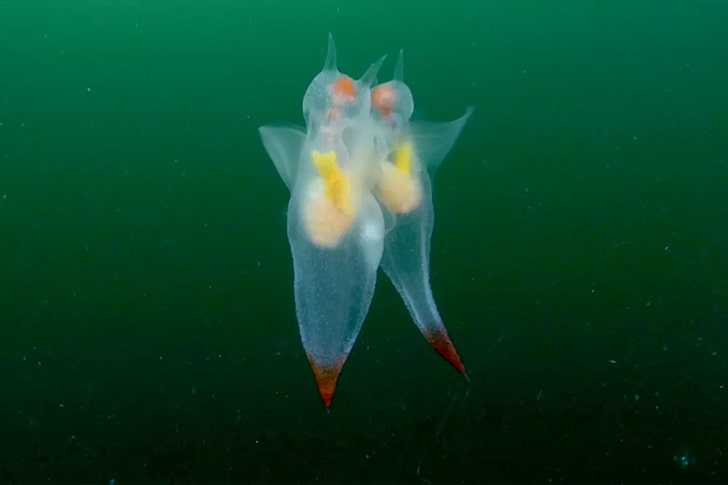
Despite how beautiful they look, these animals are actually slugs! Yes, you read that right. Their transparent bodies and shape give them the appearance of angels, and that’s where they got their name from. They are extremely small in size and usually live in the Antarctic.
They mostly keep to shallow waters as that's where their prey lives. Their diet consists mainly of snails. They are often confused with jellyfish and other types of slugs, but they have their very own family. The fact that they lack a shell gives them more freedom for swimming around.
Giant Squid
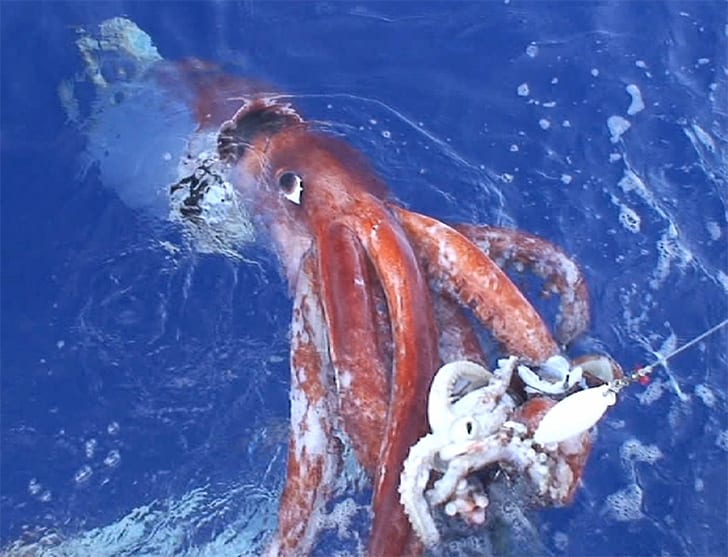
With them reaching as long as 46 feet, giant squids have become some sort of deep-sea celebrities. They are some of the largest living organisms today, and just imagine that they can be the same size as a school bus! The female squids are usually longer than the male ones.
The giant squids have a large head, eight limbs, and two tentacles used for trapping their prey. Some scientists even believe that they can hunt and eat a small whale. The squids’ biggest threat is believed to be the cachalot whale, the largest predator with teeth in the world.
.

